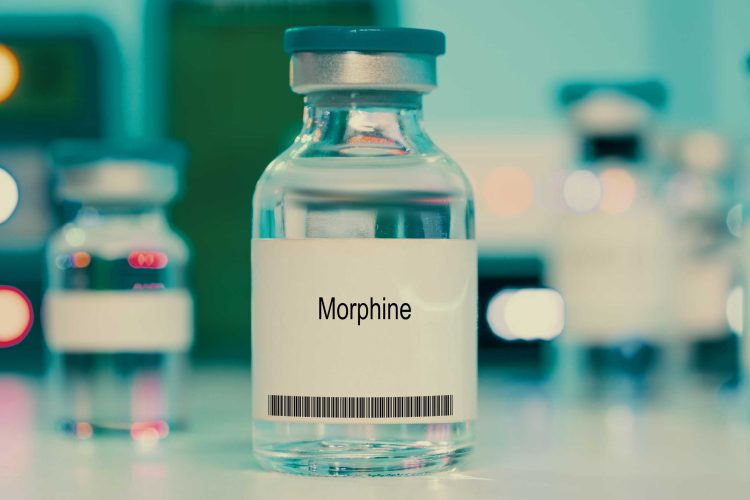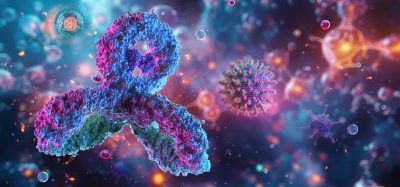The promise of 3A5C7 mAb in the treatment of morphine tolerance
Posted: 30 January 2024 | Dr Jia-Jia Zhang (Fourth Military Medical University), Ellen Capon (Drug Target Review) | No comments yet
Morphine is a frequently used analgesic that activates the mu-opioid receptor (MOR), which has prominent side effects of tolerance. A monoclonal antibody (mAb) precisely targeting MOR, named as 3A5C7, was developed to treat morphine tolerance by enhancing morphine-induced MOR endocytosis via GRK2/β-arrestin2 pathway. In this Q&A session with Dr Jia-Jia Zhang, we discuss the novel mechanism and the promising translational value of 3A5C7 mAb in the treatment of morphine tolerance.

In the context of morphine tolerance, could you explain the significance of mu-opioid receptor (MOR) endocytosis and the impact of morphine’s inefficiency in inducing this process?
Morphine is a frequently used analgesic that activates the mu-opioid receptor (MOR), which has prominent side effects of tolerance 1. The key molecular mechanism of morphine tolerance is its inefficiency in inducing the endocytosis of MOR2. After binding to opioids, MOR is desensitised by G protein-coupled receptor kinases (GRKs), and MOR phosphorylated by GRKs recruits β-arrestin2, which further leads to receptor endocytosis, recycling to the membrane, and resensitisation3. However, morphine has a poor ability to induce the endocytosis of MOR. Therefore, desensitised MOR is poorly internalised and resensitised, contributing to both acute and chronic tolerance to morphine.
What are specific downstream signalling pathways associated with morphine-induced MOR phosphorylation, and how does this relate to the development of morphine tolerance?
After being activated by opioids, MOR is phosphorylated at up to 20 potential phosphorylation sites in intracellular regions, contributing to receptor desensitisation and endocytosis4. MOR can be phosphorylated by both GRK and protein kinase C (PKC), which promotes acute receptor desensitisation. Receptors phosphorylated by GRK often recruit β-arrestin and are then endocytosed and resensitised, while receptors phosphorylated by PKC, on the contrary, are resistant to endocytosis and/or resensitisation3. Following endocytosis, MOR is dephosphorylated and recycled back to the plasma membrane in a reactivated state, which reinstates signal transduction. Morphine has a poor ability to induce endocytosis both in vitro and in vivo. Thus, desensitised MORs are poorly internalised and accumulate on the plasma membrane, resulting in morphine tolerance.
Regarding the in vitro model of morphine tolerance using differentiated SY5Y cells induced by retinoic acid, could you discuss the broader implications of adenylate cyclase hyperactivation as an in vitro biomarker for morphine tolerance?
Long-term exposure to morphine leads to adenylate cyclase (AC) hyperactivation, which refers to the phenomenon that prolonged exposure to brings about a gradual loss in agonist inhibition of AC and a resultant increase in AC activity. This kind of regulation in AC activity is a kind of cellular adaptation in to the activation of opioid receptors and contributes to the development of opioid tolerance, dependence, and withdrawal 5.
Could you elaborate on the relevance and importance of the GRK2/β-arrestin2 pathway in mediating morphine-induced MOR endocytosis, particularly in the context of attenuating morphine tolerance and dependence?
MOR phosphorylated by GRKs, predominantly the GRK2 and GRK3 subtypes, recruits and interacts with β-arrestin2 at the plasma membrane, where β-arrestin2 promotes the uncoupling of MOR from the G protein and facilitates MOR endocytosis via a clathrin-dependent pathway 6-8. Following endocytosis, MOR is dephosphorylated and recycled back to the plasma membrane in a reactivated state, which reinstates signal transduction. Noticeably, morphine has a poor ability to induce endocytosis both in vitro and in vivo. Thus, desensitised MORs are poorly internalised and accumulate on the plasma membrane, resulting in morphine tolerance. Moreover, morphine binding and occupation induce spatial conformation changes in MOR, which are essential for signal transduction. The recruitment and accessibility of GRKs and β-arrestin to MOR require specific MOR spatial conformation. To facilitate MOR to transform to such a conformation is one of the strategies to induce MOR endocytosis.
Considering the findings on MOR recycling from the cytoplasm to the plasma membrane, how might this process influence the regulation of MOR function and subsequently impact morphine tolerance mechanisms?
MOR recycling from the cytoplasm to the plasma membrane is a precondition for resensitised receptors to locate to the membrane to exert normal functions. In other words, only being successful in inducing MOR endocytosis is not enough to counter MOR desensitisation and morphine tolerance. Only the receptors recycled back to membrane could further bind with new morphine. In our study, we studied the effects of the 3A5C7 monoclonal antibody (mAb) on the recycling of MOR and found that 3A5C7 mAb did not interfere with the recycling of MOR after internalisation. This finding ensures that the internalised receptors induced by 3A5C7 mAb could be further recycled to the membrane, which promises the efficacy of 3A5C7 mAb to treat morphine tolerance.
Considering the translational potential of this research to clinical applications, what are the key preclinical findings that present the 3A5C7 monoclonal antibody as a promising therapeutic option for managing morphine tolerance in humans?
The key preclinical findings that support translating 3A5C7 mAb into clinical use is its efficacy to treat morphine tolerance both in vitro and in vivo. In morphine tolerance model using differentiated SH-SY5Y cells, 3A5C7 mAb diminished hyperactivation of adenylate cyclase, the in vitro biomarker of morphine tolerance. In mice, 3A5C7 mAb significantly alleviated morphine tolerance and also attenuated morphine dependence. In addition, 3A5C7 mAb deals with the core mechanisms in morphine tolerance, that is, receptor endocytosis. It enhanced morphine-induced MOR endocytosis via GRK2/β-arrestin2 pathway. This also provides solid theoretical basis to treat morphine tolerance.
The full study entitled ‘Monoclonal antibody targeting mu-opioid receptor attenuates morphine tolerance via enhancing morphine-induced receptor endocytosis‘ is published in the Journal of Pharmaceutical Analysis.
References
- Mercadante S, Arcuri E, Santoni A. Opioid-Induced Tolerance and Hyperalgesia. CNS Drugs. 2019;33(10):943-55.
- Wang S. Historical Review: Opiate Addiction and Opioid Receptors. Cell Transplant. 2019;28(3):233-8.
- Martini L, Whistler JL. The role of mu opioid receptor desensitization and endocytosis in morphine tolerance and dependence. Curr Opin Neurobiol. 2007;17(5):556-64.
- Dang VC, Christie MJ. Mechanisms of rapid opioid receptor desensitization, resensitization and tolerance in brain neurons. Br J Pharmacol. 2012;165(6):1704-16.
- Zhao H, Loh HH, Law PY. Adenylyl cyclase superactivation induced by long-term treatment with opioid agonist is dependent on receptor localized within lipid rafts and is independent of receptor internalization. Mol Pharmacol. 2006;69(4):1421-32.
- Kovoor A, Celver JP, Wu A, Chavkin C. Agonist induced homologous desensitization of mu-opioid receptors mediated by G protein-coupled receptor kinases is dependent on agonist efficacy. Mol Pharmacol. 1998;54(4):704-11.
- Groer CE, Schmid CL, Jaeger AM, Bohn LM. Agonist-directed interactions with specific beta-arrestins determine mu-opioid receptor trafficking, ubiquitination, and dephosphorylation. J Biol Chem. 2011;286(36):31731-41.
- Stein C. Opioid Receptors. Annu Rev Med. 2016;67:433-51.
About the author
Dr Jia-Jia Zhang, Doctoral candidate
 Dr Jia-Jia Zhang is a doctoral candidate at the National Translational Science Center for Molecular Medicine & Department of Cell Biology, Fourth Military Medical University, and her research interest is the development of therapeutical antibodies to treat human disease.
Dr Jia-Jia Zhang is a doctoral candidate at the National Translational Science Center for Molecular Medicine & Department of Cell Biology, Fourth Military Medical University, and her research interest is the development of therapeutical antibodies to treat human disease.
Related topics
Antibodies, Drug Development
Related conditions
Morphine tolerance
Related organisations
National Translational Science Center for Molecular Medicine & Department of Cell Biology (Fourth Military Medical University)
Related people
Dr Jia-Jia Zhang (Fourth Military Medical University)







